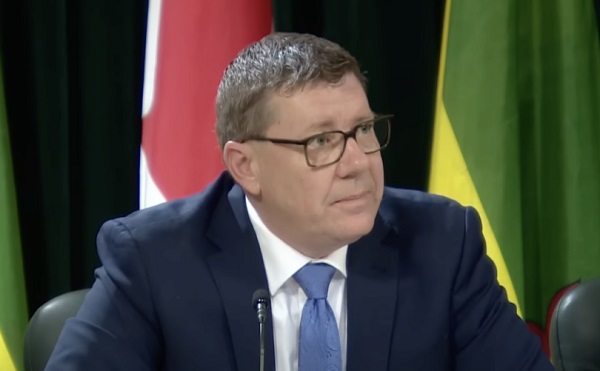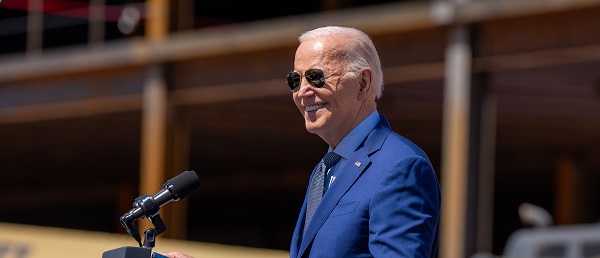Alberta
Province calling out for volunteers and honouring Albertans who support their community

From the Province of Alberta
Call to action for COVID-19 volunteers
Albertans have always risen to the call of duty when our province has been challenged, and the COVID-19 pandemic is no different. Today, the Government of Alberta is launching a new tool to connect Albertans with volunteer opportunities during this unprecedented global crisis, and launching the Northern Lights program to recognize Albertans who volunteer to support their community.
While physical distancing and gathering restrictions are in place, there is still a need for healthy volunteers to help those in need with countless opportunities to do so. The Alberta Cares Connector embraces the Alberta spirit of supporting the vulnerable by offering our assistance, skills and time to those who need it most.
“Volunteerism is the Alberta way. I continue to be inspired by many acts of Albertan generosity and compassion. From the Sikh community providing meals for truckers keeping our supply lines open, to a Calgary woman in her time of mourning sewing masks for her community, to kids leaving care packages on their elderly neighbours’ doorsteps – the examples of generosity and selflessness are endless. The Alberta Cares Connector will build off this community solidarity and ensure that those who can help will make the biggest impact during this time when support is acutely needed. The Northern Lights program keeps a platform commitment to spotlight those who personify the Alberta sprit by giving back to our community through volunteerism.”
Volunteers are the foundation for many community organizations providing social support and assistance to those in need. Alberta has more than 26,400 non-profit organizations and, each year, more than 1.6 million Albertans provide more than 262 million volunteer hours to support the non-profit and voluntary sector at a value of $5.6 billion.
“Albertans are proud to have the highest volunteer rates across Canada, and we take action in countless ways to meet the needs of our communities and neighbours. During this unprecedented crisis, Albertans understand that the need for volunteerism and social support is urgent. And, once again, they have demonstrated their commitment to their neighbours and communities through selfless acts of service. The Alberta Cares Connecter will assist Albertans who want to help at this time by connecting them with local volunteer opportunities to help those most in need.”
This new tool will build on the success of every day Albertans who answered the call to action by providing an easy one-stop-shop for those looking for service opportunities. The Alberta Cares Connector will ensure those organizations and programs that depend on the generosity and assistance of volunteers are able to continue to provide support to those in need.
“We are thrilled about our collaboration with the province on the new Alberta Cares Connector. We’ve supported volunteering through floods and fires and built a platform that could be flexible to allow volunteers to rise to any challenge. Alberta Cares Connector will continue to evolve and create new ways for community organizations to connect with current and prospective volunteers who want to answer the call to help others in need.”
Volunteers and volunteer organizations must follow all necessary precautions to prevent the spread of COVID-19 to protect themselves and those they help. More information on safety and physical distancing guidelines can be found at alberta.ca/COVID19.
Ways people can help
- Volunteering at food banks.
- Sewing masks or scrub bags for front-line health-care workers.
- Providing meals for essential service workers, like truckers.
- Picking up groceries for those unable to leave their homes.
- Packing and delivering essential needs for vulnerable Albertans.
- Donating blood through myaccount.blood.ca.
- Donating items to shelters in need.
- Reaching out to seniors through positive messages or phone calls.
Northern Lights Volunteer Recognition Program
Government is also launching the Alberta Northern Lights Volunteer Awards to honour everyday heroes as the province responds to the COVID-19 pandemic. The honourees will be nominated by fellow Albertans and selected for profiling on the program’s website and through social media.
There are no requirements for hours of service, and any individual or group who helps out in their community is eligible for an award. The nomination submission requests a brief story about the nominee’s contribution. Nominations will be accepted online on an ongoing basis.
“Volunteers are the heart of non-profits and right now we need Albertans to give their time and talents to community organizations. Any act of volunteerism, done safely, will make a huge difference. That’s why the Government of Alberta is making a point of recognizing those individuals, businesses and organizations who have answered the call in this time of need. Let’s share the uplifting and inspirational stories of special volunteers who are brightening the lives of others and their communities during this difficult time by nominating them for an Alberta Northern Lights Volunteer Award. ”
The program is now accepting nominations.
Alberta
Big win for Alberta and Canada: Statement from Premier Smith

Premier Danielle Smith issued the following statement on the April 2, 2025 U.S. tariff announcement:
“Today was an important win for Canada and Alberta, as it appears the United States has decided to uphold the majority of the free trade agreement (CUSMA) between our two nations. It also appears this will continue to be the case until after the Canadian federal election has concluded and the newly elected Canadian government is able to renegotiate CUSMA with the U.S. administration.
“This is precisely what I have been advocating for from the U.S. administration for months.
“It means that the majority of goods sold into the United States from Canada will have no tariffs applied to them, including zero per cent tariffs on energy, minerals, agricultural products, uranium, seafood, potash and host of other Canadian goods.
“There is still work to be done, of course. Unfortunately, tariffs previously announced by the United States on Canadian automobiles, steel and aluminum have not been removed. The efforts of premiers and the federal government should therefore shift towards removing or significantly reducing these remaining tariffs as we go forward and ensuring affected workers across Canada are generously supported until the situation is resolved.
“I again call on all involved in our national advocacy efforts to focus on diplomacy and persuasion while avoiding unnecessary escalation. Clearly, this strategy has been the most effective to this point.
“As it appears the worst of this tariff dispute is behind us (though there is still work to be done), it is my sincere hope that we, as Canadians, can abandon the disastrous policies that have made Canada vulnerable to and overly dependent on the United States, fast-track national resource corridors, get out of the way of provincial resource development and turn our country into an independent economic juggernaut and energy superpower.”
Alberta
Energy sector will fuel Alberta economy and Canada’s exports for many years to come

From the Fraser Institute
By any measure, Alberta is an energy powerhouse—within Canada, but also on a global scale. In 2023, it produced 85 per cent of Canada’s oil and three-fifths of the country’s natural gas. Most of Canada’s oil reserves are in Alberta, along with a majority of natural gas reserves. Alberta is the beating heart of the Canadian energy economy. And energy, in turn, accounts for one-quarter of Canada’s international exports.
Consider some key facts about the province’s energy landscape, as noted in the Alberta Energy Regulator’s (AER) 2023 annual report. Oil and natural gas production continued to rise (on a volume basis) in 2023, on the heels of steady increases over the preceding half decade. However, the dollar value of Alberta’s oil and gas production fell in 2023, as the surging prices recorded in 2022 following Russia’s invasion of Ukraine retreated. Capital spending in the province’s energy sector reached $30 billion in 2023, making it the leading driver of private-sector investment. And completion of the Trans Mountain pipeline expansion project has opened new offshore export avenues for Canada’s oil industry and should boost Alberta’s energy production and exports going forward.
In a world striving to address climate change, Alberta’s hydrocarbon-heavy energy sector faces challenges. At some point, the world may start to consume less oil and, later, less natural gas (in absolute terms). But such “peak” consumption hasn’t arrived yet, nor does it appear imminent. While the demand for certain refined petroleum products is trending down in some advanced economies, particularly in Europe, we should take a broader global perspective when assessing energy demand and supply trends.
Looking at the worldwide picture, Goldman Sachs’ 2024 global energy forecast predicts that “oil usage will increase through 2034” thanks to strong demand in emerging markets and growing production of petrochemicals that depend on oil as the principal feedstock. Global demand for natural gas (including LNG) will also continue to increase, particularly since natural gas is the least carbon-intensive fossil fuel and more of it is being traded in the form of liquefied natural gas (LNG).
Against this backdrop, there are reasons to be optimistic about the prospects for Alberta’s energy sector, particularly if the federal government dials back some of the economically destructive energy and climate policies adopted by the last government. According to the AER’s “base case” forecast, overall energy output will expand over the next 10 years. Oilsands output is projected to grow modestly; natural gas production will also rise, in part due to greater demand for Alberta’s upstream gas from LNG operators in British Columbia.
The AER’s forecast also points to a positive trajectory for capital spending across the province’s energy sector. The agency sees annual investment rising from almost $30 billion to $40 billion by 2033. Most of this takes place in the oil and gas industry, but “emerging” energy resources and projects aimed at climate mitigation are expected to represent a bigger slice of energy-related capital spending going forward.
Like many other oil and gas producing jurisdictions, Alberta must navigate the bumpy journey to a lower-carbon future. But the world is set to remain dependent on fossil fuels for decades to come. This suggests the energy sector will continue to underpin not only the Alberta economy but also Canada’s export portfolio for the foreseeable future.
-

 2025 Federal Election1 day ago
2025 Federal Election1 day agoMark Carney refuses to clarify 2022 remarks accusing the Freedom Convoy of ‘sedition’
-

 2025 Federal Election2 days ago
2025 Federal Election2 days agoLiberal MP Paul Chiang Resigns Without Naming the Real Threat—The CCP
-

 2025 Federal Election2 days ago
2025 Federal Election2 days agoPM Carney’s Candidate Paul Chiang Steps Down After RCMP Confirms Probe Into “Bounty” Comments
-

 Business1 day ago
Business1 day agoSaskatchewan becomes first Canadian province to fully eliminate carbon tax
-

 Business2 days ago
Business2 days agoBiden’s Greenhouse Gas ‘Greendoggle’ Slush Fund Is Unraveling
-

 Automotive1 day ago
Automotive1 day agoElectric cars just another poor climate policy
-

 Business2 days ago
Business2 days agoTrump says ‘nicer,’ ‘kinder’ tariffs will generate federal revenue
-

 2025 Federal Election2 days ago
2025 Federal Election2 days agoFight against carbon taxes not over yet






